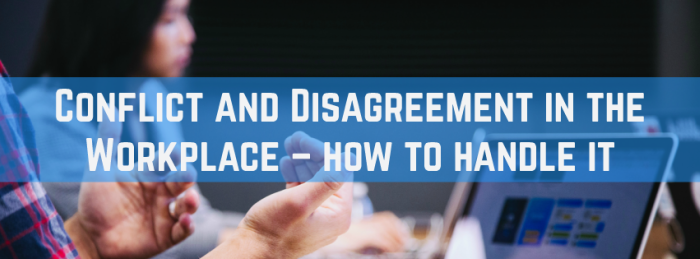Conflict & Disagreement
|
|
|
|
Author: Kate Earnshaw, Senior HR Business Partner – Consultancy Service Date: 9th November 2020 Let me set the scene; it’s the last few days before the end of another busy term and you are counting down to some well earned rest and recuperation. All of a sudden you hear raised, angry voices reverberating off the walls of the staff room and along the corridor to your office. You spring from your chair to see what on earth might be the matter and find your Year 3 Class Teacher and Teaching Assistant in a fit of frenzy. Hopefully that doesn’t sound familiar and isn’t a common place occurrence in your workplace, it certainly isn’t a common event nationally. In a Business Poll it was found that more than 92% of workplaces said that conflict was a rare occurrence. However, even though it is rare, it does happen and it is important to be prepared to handle such events well as; if handled badly; the effects can be damaging for you, the individuals in dispute and your workplace. What causes conflict?Most commonly conflict in the workplace is born out of one of the following issues:
Have you ever heard an employee say “My line manager is rude to me all the time...” or “my colleague doesn’t pull her weight, I end up doing twice the work and she gets away with it...”? In the example at the top of the article, it is obvious you couldn’t ignore that situation as it was likely to escalate and was quite likely to disturb other staff and students in the vicinity. Sometimes though, an employee might make a comment like those above in a fairly calm manner and it is important that this is not simply ignored or discounted as they may feel as upset and unhappy as the individual who shouts and yells their issues to others. How to address possible conflict and disagreementIt is rare that these issues come to your attention when you are sat quietly waiting for something to do! Let’s look at the first example of two members of staff deep in an argument. It is obvious that the setting of such a conversation is inappropriate and that the tone and volume is not appropriate for a workplace. Therefore tip number one would be to try and de-escalate the immediate situation by disbanding both individuals away from each other to “cool off”. Calmness and a balanced tone and vocabulary are important, you do not want to end up another person shouting to be heard or drawn into one persons’ side over the others. Tip number two would be to arrange a time as soon as possible after the event to speak to both individuals involved in the fracas. Again, do not get drawn into one side or the other and ensure you give enough time for the person to feel heard and that the setting is private and you will not be disturbed. As a Mediator I find it best to focus on a mutually desired outcome such as how both individuals can work together in future with dignity and respect. This type of focus is neutral and also business and future focused. In a joint meeting with the parties in dispute it’s easy to find yourself drawn into the issue between the parties and want to offer your opinion with the best of intentions but this should be avoided. Without meaning to, you could appear to be taking one person’s side over the others, or even worse; you could find you upset both parties and you are the new focus of their issues! So my tip is to encourage the parties to speak to each other directly and not use you as a go-between. My final tip is to not take on more than you feel comfortable to; mediation is a skill that requires training and works best when both the individual leading the session and the venue for the session are neutral. That being said, if you feel comfortable to try and support the parties in conflict to move past their differences go for it! As PACT HR’s ILM Qualified Mediator I am on hand for support should you need so please do not hesitate to get in touch! kate.earnshaw@bradford.gov.uk |
